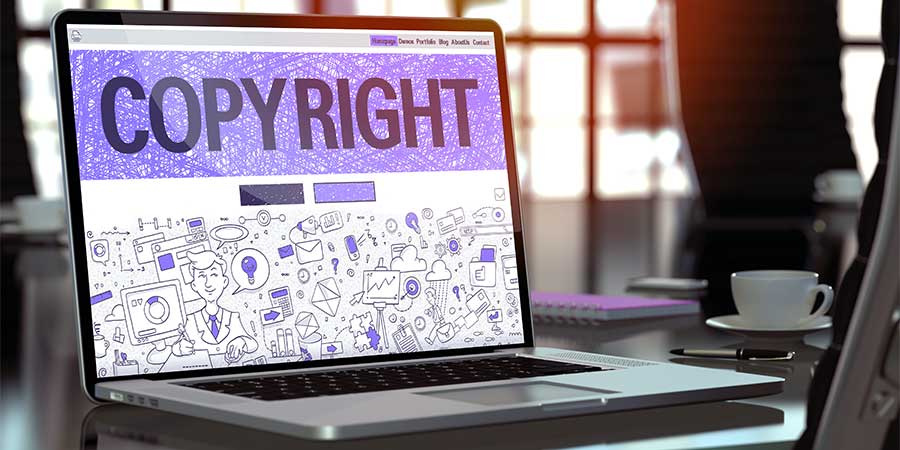|
5/28/2024 0 Comments Make Your Website ADA CompliantWhile ADA compliance isn’t mandatory for every business website, it should be. Open your business up to all your customers. If your business provides a service to customers, it should comply with ADA regulations provided your business meets the following criteria:
The ADA’s guidance on website accessibility has caused confusion because there are no explicit standards. Instead, the ADA recommends looking at existing technical standards like the Web Content Accessibility Guidelines (WCAG). You want to ensure an effective website design with feature accessibility so everyone can navigate it easily, including individuals with vision issues, hearing loss and other differences.
NEXT STEPS When you’re ready to ensure that all of your customers can access and easily navigate your site, reach out to our experts. We’re standing by to help build your online presence. Learn more at GreyPartners.com
0 Comments
Everybody is in a panic, as they always are after a Google update. This time we’re cheering Google's massive March 2024 update that makes some long overdue changes designed to reduce unhelpful, low-quality content as part of a broader effort to combat content spam. This is great news for SMB’s that invest in SEO as it should reduce some of the competitive clutter that’s been working against them.
Effective SEO creates value for users. Googles latest update rewards organizations that publish original content based on proprietary data, fresh perspectives, and subject matter expertise. Google is open to Ai generated content when used thoughtfully to enhance quality within a people-first context. For example, when developing content for a client in the chemical manufacturing industry, we work with the client to establish subjects that they’re customers inquire about most. Gather data and insights from various departments within the organization. Prepare a brief, then use Ai to find additional information that may also be valuable to readers. We’re using Ai to enhance copywriters efficiency and ensure that we’re not missing an angle important to our audience – rather than pumping a headline into Ai and letting it generate blind content. That’s a tall order for SMB’s and requires focused investment. It’s also why you find so much low-quality content online. Many SEO companies ‘game the system’ by generating content solely to manipulate search rankings. Those that have relied on AI-generated content began feeling the pain. Some sites received ‘Pure Spam’ notifications via Google Search Console and found their sites had disappeared from search results. If you’re shopping for an SEO provider, ask them about how sites they manage weathered the March update. Ask for references. And, inquire about these three practices that Google now considers content spam: 1. Templated Content Scaling – Scaled Content AbuseThis is an SEO tactic increasingly used by SEO Agencies and Consultants to manipulate search rankings. This includes mass-produced content created to game rankings, whether human or AI-generated. Learn more about in this article from our friends at Embryo. Thankfully, Google is taking on cringeworthy content in favor of useful information that people value. It’s all about helping you, the user, find well curated, helpful and original content. Google spam policies list specific examples of scaled content abuse which include:
2. Expired Domain AbuseExpired domain abuse is a particularly nasty practice that involves repurposing expired domains to host low-quality content to manipulate search rankings. The practice has been growing over the past two years driving ethical SEO professionals crazy. Google aims to end this practice by punishing clearly irrelevant domains when comparing their old content to new content. 3. Parasite SEO – Site Reputation AbuseParasite SEO refers to a digital marketing strategy where unethical marketers leverage the authority of established platforms to rank their content quickly with less effort, typically by posting content on these platforms with backlinks to their own websites. The practice involves piggybacking on trusted sites' authority to boost low content volume and/or poor quality content. Typically low-quality content is hosted on high-authority websites to gain ranking benefits. The March 2024 update specifically targets this practice, aiming to remove the incentive for using reputable sites to rank low-value content. At the SERP conference last week, Gary Illyes, analyst on the Google search team, said that Google has taken steps to combat what some of us call parasite SEO in the most recent Google algorithm update. Manual penalties have already come down from Google with many sites being removed from search results specifically for parasite SEO practices. Moving Forward Successful SEO content development must be fully focused on people-first, original content that delivers value from the users perspective. To accomplish this, we recommend that content developers:
Image use can be tricky. Check out this quick read to better understand how to proactively safeguard your business and your marketing assets.
Are you using images legally online? Learn how to avoid copyright infringement and protect yourself from legal consequences with this guide. Images are an essential component of online content – and it’s obvious why. Images aren’t just pretty—they’re powerful marketing tools that help you stand out. They pique your audience’s attention, enhance your messaging, and significantly enhance the appeal and effectiveness of your content. Whether you’re creating a social media post, a webpage, an ebook, a blog post, or something else, adding visuals goes a long way in improving the overall user experience. However, you can’t just pull images off the internet and use them – and it’s your responsibility to determine if and how you can use the image without breaking the law. If you violate copyright law – even accidentally – you can face serious consequences. Many online platforms, such as Google and YouTube, have copyright policies that streamline copyright claims and enforcement actions. Often, a minor violation will result in receiving a DMCA notice and the content being removed or demonetized. However, if a violation is egregious or impactful enough, you could face heavier consequences such as hefty fines, court trials, and, in extreme cases, even jail time. In this article from our friends at Search Engine Journal, you can learn how to navigate these murky waters to ensure that you’re using images ethically and legally online. Marketing to customers via email is an art, but it’s one any small business can master and use to grow and retain customers. All businesses need to grow but small businesses struggle to afford traditional marketing channels. Direct mailers can cost up to $1 per target, while billboards could run you $14,000 apiece in major cities. And television commercials can run into the millions, once you include the cost of production and placement.
What if I told you there was a way to grow and retain customers for much less? It’s not magic, you just need to harness the power of email marketing. Why Use Email Marketing For Your Small Business? When it comes to reaching new audiences, heating up cold leads, or staying top of mind with existing customers, there’s nothing quite like email marketing – and not just because it’s cost-effective. The main reason you need to be using email campaigns is that they’re extremely effective. The average open rate for marketing emails in 2023 was a whopping 21.5%. That makes it by far one of the most effective ways to advertise. Professional marketers know it works – that’s why 41.5% consider it a very critical factor in their company’s success. In 2023, email marketing provided a return on investment (ROI) of an unbelievable $52 for every dollar spent. That means you can’t afford not to use it. While price and effectiveness are two key selling points for running email marketing campaigns, one that tends to appeal to busy small business owners is that it’s something you can do in-house. You don’t have to outsource your email campaigns to an agency or hire more staff. With a little elbow grease and the information you gain here, you’ll be able to create and launch your own effective campaign in no time. How To Start Email Marketing For Your Small Business1. Choose The Right Email Marketing Platform For YouHaving the right tools is an essential part of any job, whether it’s carpentry or marketing. And for business marketing, that means selecting the right email marketing software. You could forgo this step and build all of your lists and campaigns manually in Gmail, Outlook, or whatever other email service provider you’re using, but you have a business to run. Manual list building is a tedious, time-consuming process that takes your attention and energy away from other areas. Plus, an email platform gives you the opportunity to personalize your messages while collecting performance metrics. These things alone make it worth the investment. When deciding between the dozens of programs available, you need to find one that has the right functionality for you. Some features you should consider are:
Some of the most popular email marketing platforms include: Over the past decade we’ve found that most email service providers (ESP’s) give you similar functionality. The real difference comes down to ease-of-use, support and price. And, ESP’s tend to raise their prices and limit support in line with their growth. No surprise that newer, hungrier ESP’s provide greater value. Right now we’re recommending Mailerlite to most of our small business clients. All of the four listed are excellent email service providers however, Mailerlite offers a fantastic balance of functionality, ease-of-use, support and price. 2. Build Your ListThis is the most challenging barrier to overcome for most clients. Why, because you must grow your list organically. In most cases this takes significant time and effort. To build your list: First add a signup form to your website and connect it to your ESP. This makes it quick and easy for interested visitors (who are hopefully hot leads) to subscribe and automatically be opt-in to your mailing list. Second, add an interstitial or pop-up to your site with an incentive to subscribe. You’ll be shocked by how many new emails you can generate just by adding an interstitial to your site offering a 10% discount in exchange for an email address. Third, add your current contacts and existing customers to an email list and offer them an incentive to subscribe. Go through your contacts, pull out the business cards you gathered at industry conferences, and comb the internet for the contact information of the people you want to reach. While time-consuming, this is an invaluable investment because these are the people most likely to subscribe, share and help you reach new customers. When they subscribe, send them a substantial reward of at least 20% on their next purchase. Fourth, leverage the power of your social media accounts to generate subscribers. Offer them incentives for subscribing. Never buy a list. Sending people emails without their consent is SPAM and it’s illegal. Yes, lists are for sale and unethical organizations deploy them. Beyond the ethical question of sending SPAM, there is additional risk that your sending domain will be ‘blacklisted’ by the major email service providers. So if you send SPAM from an email with your organizations primary domain, you run the risk of all email being identified as SPAM and blocked from delivery. 3. Plan Your CampaignNow that you have your targets assembled, it’s time to start figuring out what you want your email campaign to achieve. What are your goals? Do you want to send promotional emails promoting sales and special offers? Do you want to send transactional emails like abandoned cart messages or upsells? Are you soliciting referrals or reviews from existing customers? Once you have decided what you hope to accomplish, it’s time to create your campaign. There are five common types of emails that will suit most of your needs: Blast emails – used for general announcements to a large audience. Monthly newsletters – to keep your business top of mind and update your audience about new developments. Welcome emails – For new subscribers or customers. Promotional emails – offering sales, benefits, or incentives to encourage transactions. Reminder emails – encourage targets to complete purchases or make another. One of the more common sequences consists of a welcome email after initial signup, one or several promotional emails enticing sales, followed by promotional emails or reminder emails. Create interesting, relevant content that will attract the right type of people. Include a link to subscribe. Communicate value with content that’s valuable from their perspective. Re-engage past customers or warm up leads who have gone cold with email marketing. A typical sequence for this consists of a reintroduction email, reminding them of your brand, followed by a “we miss you” message that offers a discount or other incentive to use your business again. There are many other uses for emails, too. Perhaps you’re hosting an open house and want to invite the recipients. Maybe you have a monthly newsletter that helps establish your credibility and authority. The beauty of this medium is its versatility. All you need to do is customize your messaging to your goals. 4. Create Your EmailsThis is where your emails become reality. Keep it simple and straightforward. A common mistake many inexperienced marketers make is wanting to add too many bells and whistles. Not only does an overly elaborate design distract from your key message, but it also confuses customers. Keep your design clean and simple. Some businesses opt for plain text emails, which contain no graphics aside from maybe a logo in the signature. This may be too extreme for you, however. It’s okay to brand your emails, just make sure you keep them simple. Once you have settled on a design, it’s time to focus on messaging. Again, keep it simple. Communicate one idea only. The first battle is getting your message opened, and that means a compelling subject line. Try to inspire curiosity or offer some other motivation, e.g., “You won’t believe this deal,” “25% off sitewide,” or “Mistakes that can cost you.” Now that you have your reader’s attention, it’s time to make your case. Avoid overwriting and keep it simple. Explain what you’re offering or hoping to achieve, then include a call to action (CTA). Any salesperson worth their salt will tell you, you have to ask for the sale. CTAs in emails and other collateral are the marketing equivalent. Some people find it helpful to imagine writing to a specific customer they know well. Avoid jargon and colloquialisms – what may be obvious to you can be confusing or make them feel ignorant. Use simple, common language to get your message across. 5. Send The Campaign And Analyze The ResultsThe email platform you selected back in step one should provide you with all the information you want about how your messages are performing – and this should give you an idea of where you can improve them in the future. Are you not getting enough opens? You could have a bad list or maybe you need to try a different subject line. Are you getting opens, but no conversions? Try changing your content. Are you seeing a lot of unsubscribes? You could be sending too many emails that lack value from the readers perspective. Avoid being a pest. If your results are poor, don’t worry. Email marketing is an art and no one gets it right the first (or second, or third) time. That’s why you want to take advantage of A/B testing. But if you put in the work, you’ll get a feel for what does and doesn’t work in no time and start generating the results you want. Bonus Tips Here are some additional ideas to help you maximize your email campaigns:
Get Started Email marketing provides the opportunity for a massive ROI, without a lot of upfront costs. But it takes focused effort to drive consistent results. Plan your strategy, do the work, track your results and tweak your messages (in other words, follow the tips provided here), and you’ll find your campaigns getting great responses in no time. Hopefully this guide armed you with all you need to get started. If you find yourself struggling, reach out. The Grey Partners team is ready to help you build your brand and grow your business. About Grey PartnersBe found fast & impress. At Grey Partners, our objective is simple: grow your business. We are your force multiplier delivering website design, search optimization and lead generation solutions for small to medium businesses. We help you reveal your most critical opportunities, focus with purpose and achieve extraordinary growth outcomes. Learn more at GreyPartners.com As the person responsible for overseeing your organization’s online presence, ensuring site security probably keeps you up at night. You frequently express security apprehensions, yet lack the technical expertise to be confident in your site security. To address this, our team of experts has crafted a comprehensive checklist of 9 essential steps that small and medium-sized businesses (SMBs) should implement to enhance the security of their WordPress websites.WordPress is renowned for its user-friendly interface and straightforward learning curve. Beneath this benefit lies a subtle trap – creators are lulled into a false sense of security because of the ease and accessibility WordPress offers. Many of those charged with creating and managing sites lack the fundamental skills required to create safe site infrastructure, implement regular site maintenance and ensure secure user access protocols. This leaves organizations vulnerable to malicious attacks. The good news is that with the right setup, consistent upkeep, and adherence to strong user security, WordPress continues to be a secure and dependable platform. Hackers find WordPress a lucrative target because 43% of all websites are powered by it. Most attacks are conducted through a barrage of automated attacks - not motivated individuals with a specific agenda against your organization. Typically hackers are looking for the easiest sites to exploit. Minimize threats by consistently executing fundamental security practices. WordPress is open source, which means that the code that runs your website may be examined by anyone including hackers. So, is it safe to use open-source platforms? For most SMB's an open-source platform is the right choice because it’s safer, more cost effective and consistent site management is more achievable. WordPress’ open-source code is maintained by the WordPress security team, volunteer developers, ethical white hat hackers, and other interested parties with good intentions. So even if a vulnerability is exposed, it’s typically identified and quickly resolved through a WordPress update. Understand that most security breaches happen for three reasons:
WordPress Security: 9-Step Checklist1. Choose Secure HostingLow-quality hosting is a major factor behind these security vulnerabilities. Invest in a Cloud, VPS, or dedicated host with good customer service. Saving a couple bucks on shared hosting is a big risk - all it takes is for one website to be infected, and the malware can spread across every site on the network. This is why you should only consider cloud, VPS, or dedicated hosting. Research potential hosting company security records. Are they security-conscious? Do they rely on the latest technology and standards? After hiring a host, perform annual reviews to ensure their ability to provide secure hosting hasn’t declined. In addition, you should look for a host that offers the following services:
2. Install an SSL CertificateA Secure Sockets Layer (SSL) certificate encrypts the data served between the user and your website. SSL grants you an https URL and a certificate to go with it, without which users will receive a red “Not secure” notification in the address bar when visiting your site. SSL’s certification is essential because it let’s users know that your site is trustworthy and safe to visit. In fact, most browsers block access to websites without SSL. Migrating your WordPress website to HTTPS can be a difficult process for existing websites. Your website is migrated by following these four steps, which can easily be automated with Really Simple SSL.
3. Back-Up Your WebsiteBackups allow you to minimize downtime and expense should a catastrophic event take place. Even if your site does get hacked beyond repair, it won’t have to be rebuilt from scratch. An automatic backup schedule should always be in place. Check to see if your host offers weekly, monthly, or daily automated backups. If this is the case, and your host backs up both your files and database, set the backup schedule and test that it’s working properly each quarter. Backups should be scheduled daily. It’s also a good idea to process manual backups any time a major site update is performed. If your host doesn’t offer website backups, or if the backup provided by our host excludes files or our database, you can also use a plugin to perform the action. It’s a good idea to have at least a solid solution for each website you own or administer, and WordPress backup plugins can provide that extra layer of protection. 4. Keep Your Plugins and Theme UpdatedIf you’ve chosen a good host and your backups are set up, you have foundational infrastructure in place. Plug-ins are the next area of concern, and you must have a process in place to keep them updated. An outdated plugin or an insecure theme is the huge gateway for infiltrating your website. Updating your site components is as simple as going to your WP admin dashboard and checking for update notifications under Dashboard > Updates. Mark any themes or plugins you want to update by ticking the boxes, then click the button at the top/bottom to start updating them. Many plugins can be set to automatically update. Chose this option if available. And check monthly to verify that all plugins are updated. If a plug-in consistently fails to update, consider replacing it with a plug-in that can be more securely maintained. More important than updating your plugins and themes is keeping WordPress up to date. It’s estimated that 40% of hacked WordPress sites were exploited because WordPress was outdated. Avoid pushing off an update because it may interfere with a plugin. Lose the plugin to save your site. Pro tip: Remove the WordPress version number from your source code. By default, WordPress websites carry a meta tag containing the WordPress version number that the site is using. Why make hackers job easier? If you are using a WordPress security plugin, many of them hide your WP version automatically. 5. Install Plugins and Themes From Reliable SourcesAnother big mistake WordPress users make is getting their plugins and themes from unreliable vendors. A bad theme or plugin can corrupt, deface, or inject malware into your pages. Third-party websites and developers are not endorsed by WordPress, and as such, you never know what you’re getting. Even if a plugin is in the official directory, it is not guaranteed to be safe. Before downloading any plugin, perform due diligence. Know how often they are updated, if they are maintained and how popular they are. WPScan offers a free directory of known plugin vulnerabilities to help in your plugin review. The same is true for themes. WordPress offers a some themes in the theme repository. Only purchase original themes from reputable vendors. Avoid “nulled” WordPress plugins and themes. Nulled WordPress themes and plugins are pirated software - stolen copies of premium WordPress products sold at a discount or given away. Nulled themes and plugins pose significant security and SEO risks. They often include malicious code — spammy links, redirects to dubious websites, a backdoor that grants unauthorized access to your data, or malware that could steal confidential information or even crash your entire site. 6. Disable File EditingWordPress comes with a set of easy-to-reach theme and plugin editors. You can find them under Appearance > Theme Editor and Plugins > Plugin Editor. These allow direct access to your site’s code. These tools are useful to experienced programmers. It’s best practice to disable file editing, as hackers can use the file editor to quickly execute malicious code or delete entire parts of your website. Disabling this slows them down. You could also turn off the theme and plugin editors with one line of code in wp-config.php. If you end up needing to edit your site or plugins, just temporarily turn them back on. Alternatively, you can edit them via an FTP client. Disabling file editing won’t necessarily prevent attackers from doing damage, but it can confuse less experienced hackers and slow their attacks down allowing time for the attack to be discovered and begin eliminating the threat. 7. Secure Your Login Process Through Multi-Factor AuthenticationOne of the most common ways hackers gain access is through brute force attacks. Automated scripts are used to guess the right username and password to access your WordPress website. A successful brute force attack can give hackers access to your website’s admin area where they can install malware, steal user information, and create havoc on your site. Brute force attacks can be stymied by requiring multi-factor authentication and strong login credentials for every user. The first step to protecting your WordPress website is to add two-factor authentication (2FA). This requires users to enter a login, password and a secondary code (from an app, email, or text message) to log in to the WordPress site. There are multiple ways to set up 2-step login in WordPress. Best practice is using an authenticator app. An authenticator app is a smartphone app that generates a temporary one-time password for the accounts that you save in it. There are many apps available such as Google Authenticator or 1Password. Learn how to set up 2F authentication in this article from our friends at Hubspot. 8. Establish Strong Login Credential RequirementsLogin credentials consist of a username and password. Most of us are keenly aware, and constantly reminded of the importance of strong passwords. Usernames are an important but often overlooked security element. Think of your password and username like your home keys: If your keys are ever lost or stolen, the finder would still need to know your address before they could use the key. Brute force attacks need to break both your username and password to be successful. Using your email address as your username is like writing your address on your key fob - it streamlines the process for hackers. Username HygieneSafe usernames are unique, memorable (but not common), safely storable, not reused, do not include personal information and do not include your email address. Avoid using these common usernames:
Password HygieneJust about everything about passwords is inconvenient. Strong passwords are challenging to create, remember, store and inconvenient to access. Good password hygiene means that every user in your system creates and effectively manages every password they use. For most of us that is hundreds of passwords. And each must be long, unique and complex. That’s a lot of passwords. Without the aid of eidetic memory, people are simply not capable effective complex password management. Password managers are fantastic tool to help users and organizations successfully manage an imposing task. These secure applications create, store and generate new passwords as needed. Most password managers can sync across several devices, so users are never without an important password when they need it. Organizations can utilize a password manager app to retain control over system access, ensure that every user follows best practices, and remotely turn access on or off. There are a variety of password managers available. Currently, two of the most reputable are 1Password and Authy. 9. Lock Down Your Login PageBy default, anyone can log into your website by going to yoursite.com/wp-admin. You can stop them in their tracks by changing the URL entirely. WPS Hide Login allows you to switch it to whatever you want. Just install it and go to the plugin settings to change it. Change your login path to something unique and difficult to decipher. For many of our clients, we utilize a combination of their client code and zip code of their HW. We use 4-letter client codes so an example would be /DCHC33109 Next, install a plugin to limit login attempts. Any person can spam your server with hundreds of requests until they guess it right. A plugin that limits login attempts will give them only a few chances before they’re locked out. It can also detect and redirect bots away from your login page. Other lock-down tools you may consider deploying are:
Keep WordPress SafeIn summary: Pick a trustworthy host with secure servers, install an SSL certificate, keep your website backed up, update your plugins and themes, and make sure all logins follow secure access protocols. Do all this and hackers will never make it beyond the gate.
Has your WordPress site ever been hacked? How did you manage to reclaim your website and clean it up? We’d love to hear your story in the comments. In the digital era, the competition amongst manufacturing businesses to stay visible and relevant online is intensifying. Gone are the days when demand, personal relationships and trade marketing alone could carve out your market space. Today, Search Engine Optimization (SEO) stands out as a powerful tool for manufacturing companies aiming to drive more business and sales through the internet. Here's why and how SEO can be your business's most efficient investment.
TULSA, OK February 6, 2024 // Ridgemont Resources, the leading specialty pharmacy recruiting firm in the United States, has selected Grey Partners to lead it's SEO efforts and further solidify its position as a market leader. The agency is tasked with building brand legacy through an integrated experience that creates meaning behind the brand. Grey Partners will serve Ridgemont Resources by spearheading technical, on-page and off-page SEO efforts. Through this work, Grey Partners aims to build brand strength and promote growth by engaging new and existing audiences. “We have bold ambitions,” said Chris Lowers, president of Grey Partners. “We're excited to build brand love and connect with new consumers through creativity, setting the Ridgemont Resources up for success now and for generations to come.” "We sought an SEO partner with a proven track record building brand value for our clients and candidates," said Jana Rugg, Ridgemont Resources president. The partnership comes after a competitive review process. The brand said what made Grey Partners stand out was how the agency challenged the brand to think outside traditional search optimization narratives. ABOUT
Grey Partners helps organizations be found fast, impress and grow through website design, search optimization and lead generation solutions tailored to the needs of small to medium businesses. What makes us different is our focus on your customers complete journey and our integrated full-funnel services. You'll benefit from our deep, functional expertise tempered by a broad perspective, informed analysis and focus on clearly actionable strategies. MEDIA INQUIRIES: [email protected] SOURCE: Grey Partners Search engine optimization (SEO) is the ongoing process of optimizing your website for search engines. Many factors play into how long it takes to see significant results. In most cases, it takes 3-12 months to see consistent improvement. Learn more in this 6-minute read.
TULSA, OK AUG. 16, 2023 // NEWSWIRE // CJ Real Estate, a real estate brokerage firm serving Oklahoma, Arkansas, Missouri and Kansas, taps Grey Partners to provide comprehensive marketing services.Grey Partners, which has been working with CJ Real Estate parent company, Cunningham-Johnson Real Estate Auctions since 2012, will continue it’s work with the Oklahoma-based brokerage company and will expand its support to include public relations, strategic B2B and B2C communications and marketing work for all brands under the Cunningham-Johnson umbrella. The Grey Partners team will work with executive management on strategic brand communications, website development, search marketing and lead generation for the new brand. Cunningham-Johnson are pioneers in the real estate auction industry specializing in ranch, residential and commercial land sales. With the development of the American Heartland Theme Park along Interstate 44 near Vinita Oklahoma came the call for more professional land brokerage services and greater ability to serve increased need for real estate services. “Their knowledge and experience in the real estate business is outstanding and they “do not blow smoke”, they tell it like it is. We look forward to working with them in the future.” Says Gene McComb, President of the American Heartland Corp. CJ Real Estate partner. With their latest venture, CJ Real Estate brings comprehensive real estate brokerage services capable of facilitating complex acreage transactions as well as residential real estate services. Learn more at https://cj-re.com
ABOUT GREY PARTNERS: Grey Partners is a digital marketing agency that combines best-in-class expertise and to drive profitable growth for small-to-medium businesses, non-profit organizations and solo practitioners. Attract, engage and convert more people to patrons through our integrated branding, website design, SEO, search marketing, creative content, and lead-generation solutions. For additional information, visit https://www.greypartners.com MEDIA CONTACT: [email protected] TULSA, OK JULY 5, 2023 // NEWSWIRE // Brainerd Chemical Company, a premier chemical manufacturer recognized as a top 100 U.S. Chemical distributor, today named Grey Partners as SEO services provider. Grey Partners is charged with enhancing Brainerd Chemical’s digital footprint to build greater competitive advantage through a robust strategic digital marketing strategy.“We’ve realized that our website is a critical need. We’re excited to see how Grey Partners will help our customer find us.” Says Neil Morgan, Brainerd Chemical COO. This win is a clear indication that the agency's business outcome-focused approach to marketing translates into client success. And, it serves as a strong validation of Grey Partners leadership in the rapidly changing digital landscape. The agency's digital design, development and SEO teams are consistently at the forefront of SERP evolution, including agency-wide initiatives driving early testing and adoption of AI-powered search across Google and Microsoft's Bing. SilverTree previously handled the account. Initial campaign work from Grey Partners for Brainerd Chemical will break in the fourth quarter of this year. ABOUT BRAINERD CHEMICAL COMPANY: Brainerd Chemical Company is one of the largest independent providers of chemicals and related services in the United States. As a manufacturer and hybrid distributor with a strategic network of facilities located in Oklahoma, Illinois, North Carolina, Mississippi, and Delaware. Brainerd Chemical Companies’ dedicated team of engineers, chemists and skilled technicians are high-hazard chemistry specialists proudly leading the way in safe, responsible chemical manufacturing and supply. https://brainerdchemical.com
ABOUT GREY PARTNERS: Grey Partners is a digital marketing agency that combines best-in-class expertise and to drive profitable growth for small-to-medium businesses, non-profit organizations and solo practitioners. Attract, engage and convert more people to patrons through our integrated branding, website design, SEO, search marketing, creative content, and lead-generation solutions. For additional information, visit https://www.greypartners.com MEDIA CONTACT: [email protected] |
Archives
May 2024
CategoriesAll Accessibility Ai Analytics Branding Company News Cybersecurity Design Digital Marketing Direct Mail E-A-T Email Google GSA Approved Hosting How To Industry News LLM Marketing Press Release Product Review ROI Search Seo Tag Manager Tracking UI UX Website Website Builder |
|
Grey Partners
1611 S. Utica Ave., Ste. 508 Tulsa, OK 74104 |
-












 RSS Feed
RSS Feed
